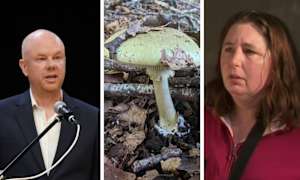ONE of the driest years on record with half the usual rainfall for many parts of Bass Coast and South Gippsland has failed to trigger state government drought relief.
Almurta farmer Peter Miller says it’s the driest he’s ever seen it.
“I keep expecting it will rain, and we did get some rain in spring, but not enough.”
Rainfall figures released by the Bureau of Meteorology show rainfall well below average for Bass Coast and South Gippsland.
The past twelve months in Bass Coast and South Gippsland have been among the driest 10 per cent of years in recorded history.
“Almurta received 640mm last year compared to an average year of a metre,” said Peter.
The official rain gauge at Inverloch recorded 626mm for 2024 compared to a mean average of 945mm.
The last time Bass Coast achieved anywhere near mean average rainfall was 2020 when the weather station at Inverloch recorded a total of 1041mm in the rain gauge.
Peter Miller says 1200mm would be a wet year in Almurta.
“The dams are pretty low now and the pasture is fast disappearing.
“I’m now starting to feed stock.”
Mr Miller said farmers left with excess stock could be in trouble.
Replacement heifers in North-East Victoria costing $1250/head three months ago are now selling for $880/head.
Mr Miller says it’s crunch time with prices in the saleyard already dropping 10 to 15 per cent.
“Farmers are being cautious,” said Mr Miller.
Never having experienced a drought Mr Miller is unsure what to expect.
State Member for Bass Jordan Crugnale MP said Agriculture Victoria is continuing to monitor seasonal, economic and social conditions across the state including Gippsland.
“We encourage farmers to seek out support through Agriculture Victoria’s tailored programs and services as well as accessing the Rural Financial Counselling Service and loans provided by the Commonwealth Government through the Regional Investment Corporation,” said Ms Crugnale.
The State Government does not make formal declarations of drought.
Drought declarations are aligned to the National Drought Agreement that Victoria is a signatory to with support provided to farmers on an ongoing basis when facing prolonged dry conditions and early intervention to ease the impact of droughts on local farming communities.
The Victorian Farmers Federation is also closely monitoring conditions throughout Victoria to help ensure the government is tuned into issues on the ground.
“South Gippsland is usually reliable country,” said Mr Miller.
“I’d be happy not to get two bad seasons in a row.”
Local farmers expect an autumn break around Anzac Day, thought as Peter notes “Anzac Day is a long way off”.
Bass Coast and South Gippsland water storages are reported to be managing the dry conditions remarkably well with Lance Creek Reservoir currently sitting at 70 per cent capacity.
Ruby Creek is just below 80 per cent capacity and Battery Creek and Deep Creek are almost 100 per cent.
The volume in storage outlook for Lance Creek Reservoir for the period November 2024 to October 2025 indicates that storage levels are expected to remain high.
The Lance Creek system is connected to the Melbourne metropolitan supply which increases resilience in times of low rainfall.
Annual maximum temperatures are also very much above average for 2024 placing Bass Coast and South Gippsland in the warmest 10 per cent of years of all time.
Peter Miller said he’s been farming in the district for fifteen years and with 450 head of cattle, he needs to be careful about replacing stock.
For town residents, Gippsland has permanent water-saving rules in place.
Water from a hand-held hose must not be used for any purpose unless the hose is fitted with a trigger nozzle and is leak-free.
Permanent water-saving rules do not apply to recycled or reclaimed water, greywater, stormwater, or rainwater collected in a storage tank.
For more information on water usage go to sgwater.com.au/services/water/permanent-water-saving-rules.











